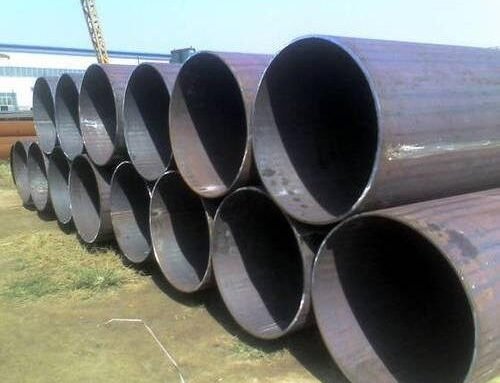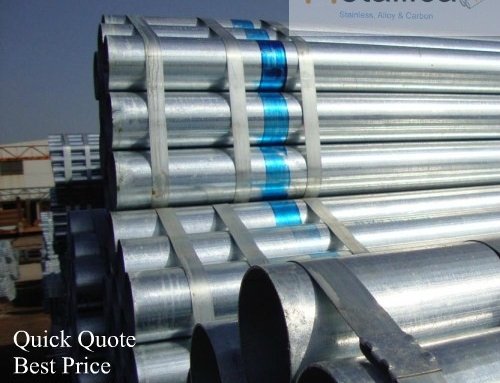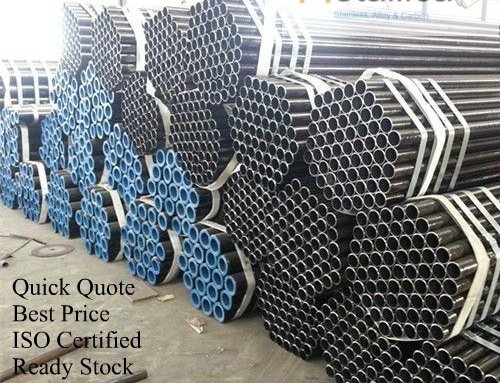A pipe is a tube used to convey water, gas, oil, or other fluid substances. Pipe inspections and integrity services give you valuable information about your project that can help extend the life of the pipeline, save on costly repairs, minimize safety risks and ensure compliance with regulatory standards.
A pipeline refers to piping outside the process plant battery limit connecting two plants mainly cross country pipelines of longer distances. Millions of miles of pipeline carrying everything from water to crude oil are running worldwide. The pipe is vulnerable to attack by internal and external corrosion, cracking, third party damage and manufacturing flaws. If pipeline carrying water springs a leak bursts, it can be a problem but it usually doesn’t harm the environment. However, if a petroleum or chemical pipeline leaks, it can be an environmental disaster. Engineers have developed devices, called pigs that are sent through the buried pipe to perform inspections and clean the pipe. Pigs are carried through the pipe by the flow of the liquid or gas and can travel and perform inspections over very large distances.
Click Here to know About Pipes
Click Here to know Difference Between Pipe and Tube
Click Here to know Difference Between Piping and Pipeline
Various testing and inspection are performed during and after the manufacturing of the pipe to ensure the quality of the pipe before it dispatched to the site for use. The main purpose of pipe inspection is to provide the client with objective, independent, and impartial information regarding the condition of the pipe that are defective and need immediate attention or are anticipated, that could have a deleterious effects. A piping inspection procedure is a comprehensive document, which need to cover inspection methods to be employed, equipment and material to be used, qualification of inspection personnel involved and the sequence of the inspection activities at the minimum.
Following are the various tests performed on pipes:-
Following Pipe Inspections are performed during Manufacturing
- Vendor Inspection
- Materials inspection including plate from steelmaking to final bench
- Development or review of inspection and test protocol (ITP)
- Welding qualifications
- Inspection of packaging, coating, including concrete coating
- Inspection of loading to railcars or trucks
Heat Treatment of Pipe
Click Here to know more about Heat Treatments of Steel
Heat Treatment on pipe is required or not depends on the method the pipe is made. If pipe is hot finished, heat treatment is not required as during the manufacturing process the heat treatment temperature of the pipe is maintained in the hot finish range till the final size and thickness is achieved. If pipe is cold finished, heat treatment is required as the temperature is not maintained in the hot finish range.
Selection of heat treatment methods will depend on types of material and on what material properties you want to restore or further enhancement on existing properties.
There are various types of heat treatment. These include Normalizing, Quenching, Tempering, Solution Annealing, Stress relieving, or it is a Combination of these.
Non-Destructive Testing (NDT)
Nondestructive testing (NDT) is the process of inspecting, testing, or evaluating materials, components or assemblies for discontinuities, or differences in characteristics without destroying the serviceability of the part or system. In other words, when the inspection or test is completed the part can still be used.
There are various types of non-destructive testing. Most frequently used NDT includes ultrasonic testing (UT), radiographic testing (RT), electromagnetic testing (ET), magnetic particle testing (MT), liquid penetrant testing (PT), visual testing (VT), eddy current and positive material identification. Other techniques include acoustic emission testing (AE), guided wave testing (GW), laser testing methods (LM), acoustic resonance testing (ART), leak testing (LT), magnetic flux leakage (MFL), vibration analysis (VA) and infrared testing (IR).
Ultrasonic testing can be done on full body or only for weld seam, whereas radiography is performed on weld seam only. Magnetic particle test is performed on pipe ends & weld seam. Hardness check is also performed on metal to confirm the standard requirements.
With so many different techniques, each having their own characteristics, some of them might be perfectly suitable for certain applications but utterly ineffective in other cases. For example, some methods are limited to surface examination while others allow a complete volumetric inspection. The different types of non-destructive testing are often complementary. As a result, we can exploit the advantages of combined techniques. Consequently, choosing the appropriate method is a very important step for optimizing the performance of an NDT inspection, it is thus essential to be well advised when preparing the inspection plan.
Distractive tests
In Distractive Testing, a sample from the actual material is cut to performed various tests. This test confirms the mechanical requirements of the manufactured pipe.
Tensile Test
The tensile test is done to check yield and ultimate tensile of the material. If required by the purchaser or by standard, high or low-temperature tensile test are also performed.
Bend test or Guided bend test are used to check integrity of weld joint
Flattening test examines ability of plastic deformation in pipe
Impact test / Charpy V-Notch Test, check the ability of material to withstand under low-temperature conditions
Creep test is performed to check the long-term effect of continued temperature under constant load on steel.
Metallurgical Tests
Metallurgical tests confirm the chemical requirements of material grades as per the applicable material standard. They are normally known as Micro and Macro testing. Micro Analysis or Chemical Analysis of Raw material, Product, and Weld ensures that all the alloying elements are within the range as specified in the material standard. Macro Analysis for Weld will check proper fusion of weld material with pipe material.
Special Tests
There are some Special tests that are also carried out on the material when it is going to be used in aggressive environments. These tests will ensure that pipe material is able to withstand in such aggressive environments also. Some of the tests are Grain size (AS & SS), IGC- Intergranular Corrosion Test(SS), Ferrite (SS), HIC- Hydrogen-induced Cracking, SSC- Sulfide Stress Corrosion Cracking, these tests are performed when it is asked by the purchaser in his specification.
Hydrostatic Test
Click Here to know Proof Test/Burst Test and Hydrotesting for Pipe Fittings
A hydrostatic test is a way in which pressure vessels such as pipelines, plumbing, gas cylinders, boilers and fuel tanks can be tested for strength and leaks. The test involves filling the vessel or pipe system with a liquid, usually water, which may be dyed to aid in visual leak detection, and pressurization of the vessel to the specified test pressure. Pressure tightness can be tested by shutting off the supply valve and observing whether there is a pressure loss. The location of a leak can be visually identified more easily if the water contains a colorant. Strength is usually tested by measuring permanent deformation of the container. Hydrostatic testing is the most common method employed for testing pipes and pressure vessels. Using this test helps maintain safety standards and durability of a vessel over time. Newly manufactured pieces are initially qualified using the hydrostatic test. They are then re-qualified at regular intervals using the proof pressure test which is also called the modified hydrostatic test. Testing of pressure vessels for transport and storage of gases is very important because such containers can explode if they fail under pressure.
Hydro test pressure is calculated based on equation given in ASTM A530, this equation is based on three parameters Pipe OD, Pipe Thickness and Pipe Wall Stress. Holding time for the hydro test is minimum 5 secs as per ASTM A530. Pressure is monitored by the computerized system. For welded pipe, the test pressure should be held for a time, sufficient to permit the inspector to examine the entire length of the weld seam. Hydrostatic test can be waived under certain conditions as set in the standard.
Visual Inspection
is one of the most effective inspection method used to check overall product quality. During the visual inspection, you will check for overall product finish. You will check for surface imperfections such as mechanical marks, lamination, tears or any other visual imperfections and also check weld defects such as porosity, undercuts, uneven weld bead, and excess or under fill of weld material. Acceptance of these imperfections are as per applicable standard
Dimension inspection
of the pipe is carried out based on the Dimension Standard, final dimension of the pipe must confirm the standard or it should be as specified in purchaser’s specification. For Welded and Seamless Wrought Steel Pipe dimensional requirements are cover in ASME B36.10. For Stainless Steel Pipe dimensional requirements are cover in ASME B36.19. During dimensional inspection Diameter, Length, Thickness, Straightness, Ovality & Weight are checked. Permissible Variations depends on manufacturing standard.
Pipe Marking
Click Here to know the Difference between Code, Standard and Specification
Click Here to know the Pipe Color Code Standard and Piping Color Codes Chart
Click Here to know the Pipe Material, Pipe Size, Pipe Schedule and Pipe Dimensions
Pipe marking is the usage of labels, typically color coded, to identify the use, contents and flow direction of pipes inside of industrial and commercial buildings. This information assists personnel when carrying out maintenance and emergency personnel when responding to emergencies.
- Once the pipe is cleared all test and inspection, it is marked as per the standard requirements. Pipe shall be marked with Manufacturer logo, ASTM material code, Material Grade, Size, Thickness- schedule no., Length, Heat No. and Special marking; WR for weld repair or NH for non-hydro tested pipe.
- These Marking can be done by paint or by Hard punching. For stainless steel pipe, stenciling is also used
- Please note that for carbon steel no hard punching below 6 mm thickness and for stainless steel no hard punching below 12 mm thickness.
Metallica deals with all types of pipe, tubing, casing, line pipe
- Seamless
- Welded
- SAW – straight – singles, double, spiral
- ERW
Metallica have experience with specifications, not limited to
- API 5L, API 5CT
- DIN EN ISO 3183, EN 10217-1, EN ISO 10219
- ASTM A-53, A-106, A-139, A-252, A-500
- DNV-OS-F101
- Coating specifications DNV RP F106, DIN 30670, NFA 49710, Shell DEP 31.40.30.31-Gen, CAN/CSA Z 245/21, GS EP COR 220, ISO 21809-1






